#fernando ayala
Explore tagged Tumblr posts
Text







Dream sequence from The Bitter Stems (Los tallos amargos, 1956) - Fernando Ayala
21 notes
·
View notes
Text
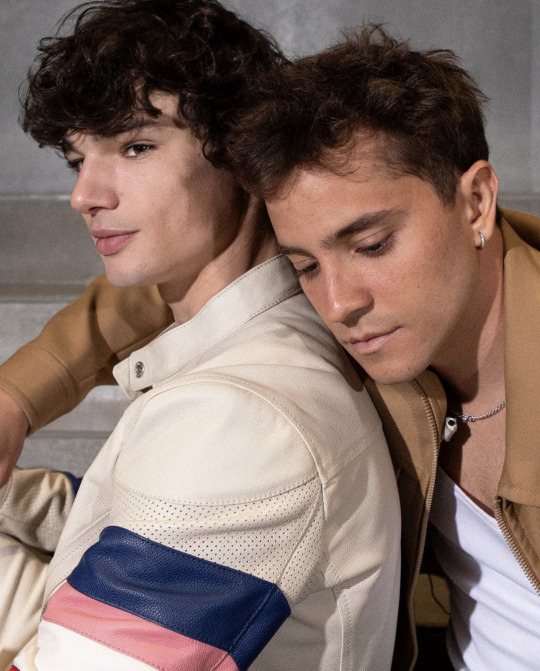


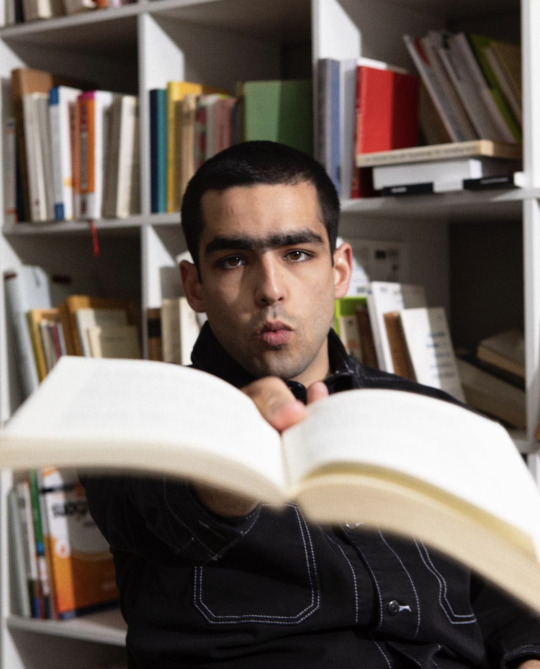



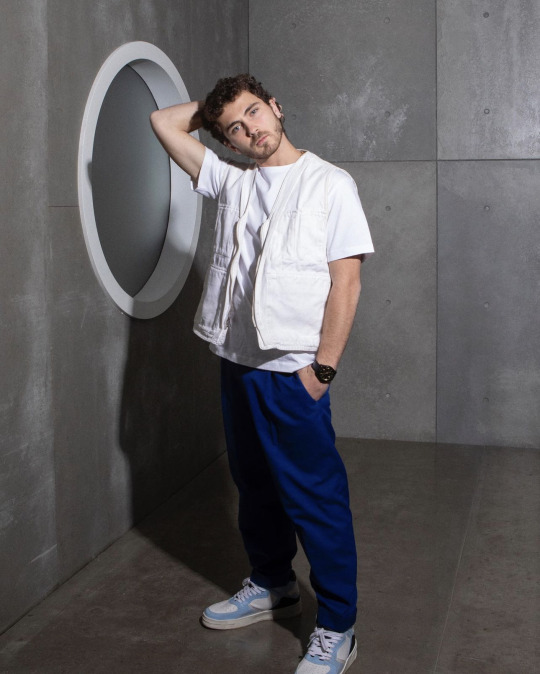


Elite Season 7
Cast Photos
#elite#elite cast#elite season 7#elite s7#elite netflix#netflix elite#andré lamoglia#andre lamoglia#iván carvalho#ivan carvalho#fernando lindez#fernando líndez#valentina zenere#gleb abrosimov#omar ayuso#omar shanaa#mirela balic#nadia al saidi ayala#ander puig#álvaro de juana#alvaro de juana#carmen arrufat#ana bokesa
104 notes
·
View notes
Text
I Don't Expect Anyone to Believe Me | Teaser
We got a sneak peek of the upcoming #MovieAdaptation of #JuanPabloVillalobos ' #IDontExpectAnyonetoBelieveMe for #Netflix. The visuals, the cut of that clip is engaging, I can't wait for the full trailer drop. #ComingSoon #MovieTeaser
Writer: Juan Pablo Villalobos (Novel), Maria Camila Arias, Fernando Frias de la Parra Director: Fernando Frías de la Parra Stars: Darío Yazbek Bernal, Natalia Solián, Alexis Ayala, Juan Minujín, and Anna Castillo. Synopsis: Juan Pablo Villalobos travels with his girlfriend Valentina to study for a PhD in Literature in Barcelona. But before he leaves Mexico, he gets involved in a criminal…

View On WordPress
#Alexis Ayala#Anna Castillo#Based on a book#Based on a graphic novel#Based on a novel#Based on Comics#Book adaptation#Book to Movie#Comedy#Darío Yazbek#Fernando Frías de la Parra#Juan Minujín#Juan Pablo Villalobos#Maria Camila Arias#Natalia Solián#Netflix#Netflix Films#Teaser#Teaser trailer
0 notes
Text
The Birth of Charles II of Spain Fanart

Warning: This story contains some artistic license
The Queen's pregnancy was approaching its end and had become a matter of utmost importance. The future of the Monarchy depended on this event. On Sunday, November 6, everything seemed to be ready. The doctors and physicians were on alert; the Queen's confessor was near her, and the Chief Steward of her Household was carefully reviewing the arrangement of the items in the birth chamber. To guarantee the success of the event, all the holy relics that were in the Palace and others brought from El Escorial and other places had been arranged in order. There was the staff of Saint Dominic of Silos that the Order of Saint Dominic had brought, the ribbon of Saint John Ortega, from the Order of the Hieronymites; the incorrupt bodies of Saint Isidore and Saint Diego de Alcalá; the image of the Virgin of Solitude and the one so venerated by the royal family, Our Lady of Atocha. It is not easy to find a space so holy and sacred. Everything, then, was ready, the things of the earth arranged to implore God's pleasure. At noon, after a frugal lunch, Philip IV retired to his chambers. At the same time, While eating, Queen Mariana suddenly felt intense pain in her abdomen, realizing that she was about to give birth. She quickly left the table and hurried to the Tower Chamber.
King Philip went straight to his study while looking at Prospero’s portraits. He entered his study, sat down, and began to write to answer the last letter of Sor Maria de Agreda. He wrote with a deep sigh and tears in his eyes.
“ With the long illness of my son, and the continuous help I was giving in his room, I have not answered your letter of the last month...I assure you that what has most exhausted me, more than this loss, is to see clearly that I have vexed God and he sent this punishment to castigate my sins...
(The king reminisces his cherished memories with Felipe Prospero while writing this letter)
Help me as a friend with your prayers to placate God’s just anger and beg Our Lord that, as he took my son from me, He may make his light shine on the Queen, whose confinement we await hourly, and give her good health and guard what is to be born, if his will, for otherwise I do not wish it...
Back in the Tower Chamber, Queen Mariana cries in agony as she is delivering her baby. The royal midwife Ines Ayala told Queen Mariana to push harder. Five other doctors were present at this event in case of emergency. One of those doctors was Dr Bravo. While the Queen was giving birth, the courtiers and Infanta Margarita looked on.
Ah, Sor Maria, If I had succeeded in following your teachings, perhaps I would not have found myself thus. Pray to our Lord that he may open his eyes, that I may perform his holy will in all things... There is nothing new in the English situation. I, thank God am in good health...
At this point, King Philip was interrupted by a courtier who delivered the news and told the events occurring in the Tower Chamber. King Philip was anxious about the future that lay within a few hours. He prayed heavily to God, asking him to deliver him a son. All could imagine the impatience of the Royal Court of Madrid and Europe, waiting for an outcome of this event. As hours passed, Queen Mariana was still in labor, and the doctors argued over natural forms of treatment. They were anxious as the Queen and the child’s life was at stake.
Dr. Bravo proposed a theory: In the past, Queen Mariana had difficult experiences giving birth to her children. At the birth of Maria Ambrosia, Felipe Prospero, and Fernando Tomas, The Queen had terrible epileptic seizures, and the infants died or lived for a short time. On the other hand, at the birth of Infanta Margarita, the only child to survive, The Queen had been perfectly well. Now why was this? The reason is simple: Just before Infanta Margarita was born, Queen Mariana had suffered several violent nosebleeds. Therefore, what she requires now is to be bled.
Some doctors disagreed, warning that the proposed action could endanger the Queen and her child. Concerned, Queen Mariana asked the doctors if there were any alternative procedures. The doctors offered different opinions, while Dr. Bravo defended his proposal. As the debate continued, Mariana went into labor with the assistance of Ines Ayala. The infant cries and is alive. The birth of the infant brought joy to all. King Philip became a father once again. When the courtier informed King Philip of the birth, he was overjoyed and immediately visited the tower chamber to see his newborn son. King Philip joyfully held his son and proudly showed him to the Queen and his daughter. When the courtier informed King Philip of the birth, he was delighted and immediately visited the tower chamber to see his newborn son. King Philip joyfully held his newborn son and showed him to the Queen and his daughter.
Sources:
Carlos, A king who would not die by John Langdon Davis
Happy Birthday, Charles II of Spain!
#all I did is just combine these stories together#history#mariana de austria#spain#art#charles ii of spain#house of habsburg#17th century#habsburg#carlos ii#please like and reblog#my art#Mariana's art#happy late birthday#sorry it took me so long#my cute baby#margarita#margarita maria#philip iv#look at them#i love them so much#they are so cute#espana#kingdom of spain#madrid spain#monarquía española#spanish empire#baroque fashion#baroque#artists on tumblr
64 notes
·
View notes
Text
Sugestões de livros
Fica aqui para que parem de me mandar ask. Notem que isto não é só coisas que eu li, são também sugestões de colegas e amigos que confio muito.
Reis e rainhas:
Toda a coleção da Temas e Debates de biografias de reis e rainhas
Rainhas Medievais de Portugal de Ana Rodrigues de Oliveira
As Avis, Joana Bouza Serrano
História de Portugal Geral
História de Portugal tanto do Rui Ramos como do José Mattoso, sendo o segundo da Círculo de Leitores portanto só se consulta em biblioteca e sao livros de cabeceira
Grandes Mistérios da História de Portugal, Fátima Mariano
História, Arte e Literatura, Diogo Ramada Curto
História Global de Portugal (autores Vários)
Portugal na Idade Média, Sérgio Luís de Carvalho
História da Vida Privada em Portugal, José Mattoso (vários volumes por épocas, só estou familiarizada com a Idade Medieval)
Breve História de Portugal / Brevíssima História de Portugal (são 2 livros distintos) A. H. de Oliveira Marques
Al-Andalus
Fath Al-Andalus, Marcos Santos
Lisboa Árabe, Sérgio Luís de Carvalho
Portugal na Espanha Árabe, António Borges Coelho
Cristãos Contra Muçulmanos na Idade Média Peninsular, Carlos de Ayala e Isabel Cristina F. Fernandes (Coord.)
História Judaica e Inquisição
História dos Judeus Portugueses, Carsten L. Wilke
Judeus Portugueses, Esther Mucznik
A Perseguição Aos Judeus e Muçulmanos de Portugal - D. Manuel e o Fim da Tolerância Religiosa (1496-1497), François Soyer
Lisboa Judaica, Sérgio Luís de Carvalho
Inquisição e Cristãos Novos, António José Saraiva
História da Inquisição Portuguesa, Giuseppe Marcocci e José Pedro Paiva
História de Lisboa
Rainha dos Mares (Queen of the Sea em inglês), Barry Hatton
Lisboa Desconhecida e Insólita, Anísio Franco
História Gastronómica de Lisboa, Manuel Paquete
Lisboa em 10 Histórias, Joke Langens
Lisboa Revolucionária, Fernando Rosas
Lisboa no Liberalismo, Victor de Sá
Lisboa Manuelina, Helder Carita
Caminhar por Lisboa, Anísio Franco
Segredos de Lisboa, Inês Ribeiro e Raquel Plicarpo
Diário de um Viajante a Lisboa, Henry Fielding
Era das Luzes
O Marquês de Pombal e a sua Época, J. Lúcio de Azevedo
Século XIX
1808, Laurentino Gomes
A Republicanização da Monarquia, Maria de Fátima Bonifácio
Século XX
O Século XX Português (Vários autores)
Portugal Entre a Paz e a Guerra, 1939 - 1945, Fernando Rosas
Curiosidades, assuntos específicos e tópicos nicho:
Portugal Insólito, Joaquim Fernandes
História Global da Alimentação (Vários autores)
Quinas e Castelos, Miguel Metelo de Seixas
They Went to Portugal, Rose Macaulay
Heroinas Portuguesas, Fina d'Armada
O Pequeno Livro do Grande Terramoto, Rui Tavares
(Des)colonização e raça:
Roteiro Histórico de uma Lisboa Africana, Isabel Castro Henriques
Portugal e o Século XX: Estado-Império e a Descolonização, Fernando Tavares Pimenta
Lisboa Africana, Sérgio Luís de Carvalho
Um Mar da Cor na Terra, Miguel Vale de Almeida
Ecos Coloniais: Histórias, Patrimónios e Memórias, de Ana Guardião, Miguel Bandeira Jerónimo e Paulo Peixoto
Caderno de Memórias Coloniais, Isabel Figueiredo
Escravidão, Laurentino Gomes
"Modo Português de Estar no Mundo": O luso-tropicalismo e a ideologia colonial portuguesa (1933-1961), Cláudia Castelo
Outras cidades:
Porto Insólito e Desconhecido, Germano da Silva
Cascais, Raquel Henriques da Silva
Qualquer livro da Scala sobre qualquer palácio público, inclusive os da Parques Sintra (Mosteiro dos Jerónimos, Palácio da Pena, Palácio da Vila, Mosteiro de Alcobaça que eu tenha)
vou atualizando à medida que vou descobrindo livros por aí
60 notes
·
View notes
Text
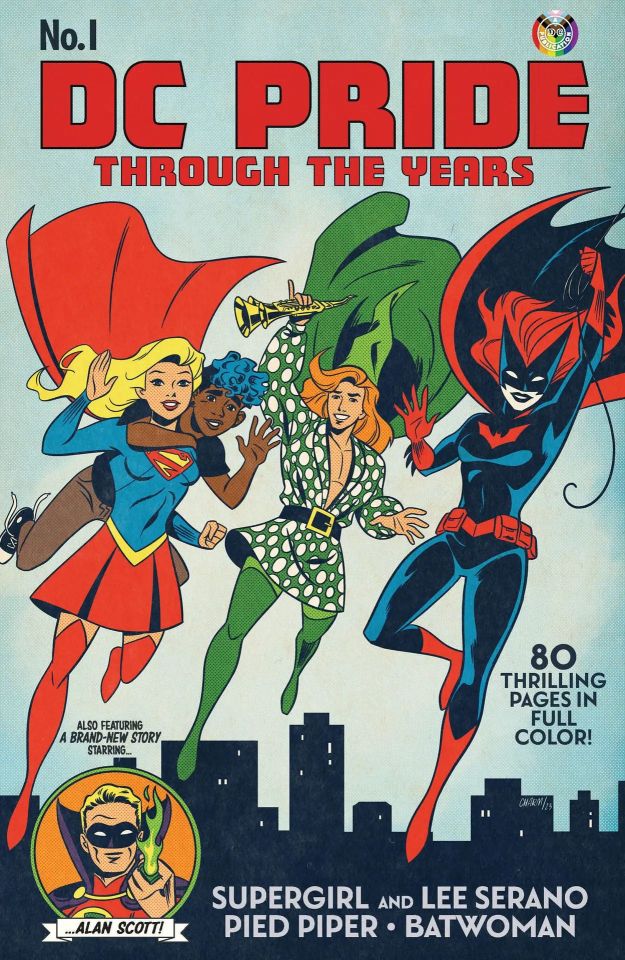

Spoilers for comics in June!
These are from the official solicits for that month, which you can see in full at Adventures In Poor Taste.
Here's the full solicit for the Pride reprint issue featuring Hartley!
DC PRIDE: THROUGH THE YEARS #1 Written by GREG RUCKA, WILLIAM MESSNER-LOEBS, STEVE ORLANDO, VITA AYALA, and TIM SHERIDAN Art by J.H. WILLIAMS III, GREG LaROCQUE, JAMAL CAMPBELL, and CIAN TORMEY Cover by DEREK CHARM $9.99 US | 80 pages | One-shot | Prestige ON SALE 6/13/23 Take a journey through over 30 years of fan-favorite LGBTQIA+ characters in the DC Universe with this collection that not only remembers and celebrates three landmark issues of days past but also teases exciting new stories yet to come! DC Pride: Through the Years collects: The Flash #53 (1991), in which villain-turned-hero Pied Piper comes out to his friend the Flash and helps thwart a dastardly villain Detective Comics #854 (2009), the thrilling beginning of Batwoman’s first solo series, which would launch her into stardom Supergirl #19 (2018), which tells the story of Lee Serano—a nonbinary teenager who befriends the Girl of Steel An all-new story starring Alan Scott, which will light the way to his next great adventure as Green Lantern!
And here's the last issue of Jeremy Adams' Flash run, which will feature past creators and future writer Si Spurrier too. There are a ton of variant covers for the issue.
THE FLASH #800 Written by JEREMY ADAMS, MARK WAID, JOSHUA WILLIAMSON, GEOFF JOHNS, and SIMON SPURRIER Art by FERNANDO PASARIN & OCLAIR ALBERT, TODD NAUCK, CARMINE DI GIANDOMENICO, SCOTT KOLINS, and MIKE DEODATO JR. Cover by TAURIN CLARKE Variant covers by MICHAEL CHO, JEFF DEKAL, SIMONE DI MEO, DAVID NAKAYAMA, and OTTO SCHMIDT Special foil variant cover by FRANCIS MANAPUL ($6.99 US) 1:25 variant cover by JAVIER RODRIGUEZ 1:50 variant cover by MATT TAYLOR The Flash movie variant cover by JONBOY MEYERS $4.99 US | 48 pages | Variant $5.99 US (card stock) ON SALE 6/6/23 An oversize anniversary issue concludes writer Jeremy Adams’s acclaimed tenure, with special guests Mark Waid, Joshua Williamson, and Geoff Johns joining the celebration! As the Adams run races to the finish line, get a prelude to the new Dawn of DC chapter of the Fastest Man Alive’s adventures from the dream team of Simon Spurrier (Coda, Detective Comics) and Mike Deodato Jr. (Avengers)!
15 notes
·
View notes
Text
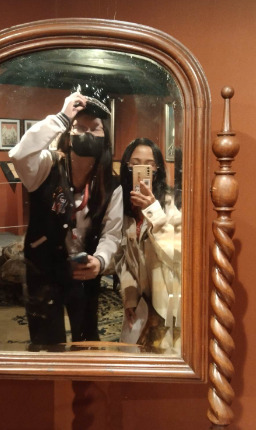
After seeing the National Museum of the Philippines, we continue on to the Yuchengco Museum, which is situated in Makati 1200 Metro Manila's RCBC Plaza at the intersection of Senator Gil Puyat Avenue and Ayala Avenue. While on the bus, I began to draw several pieces of art from the last museum. As we approached our destination, I became extremely enthusiastic since it was yet another museum. Now that we have arrived at the Yuchengco Museum, I have my sketchbook and a pencil ready. As soon as we entered the museum, the personnel at YGC greeted us with open arms. One of their primary employees helped us and provided background information on the history of the Yuchengco Museum.
According to her, the museum was established to hold the art collection of its owner, Ambassador Alfonso T. Yuchengco, and the YGC exhibit features artifacts connected to the Yuchengco family's Chinese ancestry. As we looked about the museum, we saw a section with books and presents in the lobby. This section features a broad selection of items that represent artwork from the museum's collections and shows, as well as the greatest in Filipino and sino-Filipino art and culture. The museum has a variety of rooms, including an abstract art room, a room with Jose Rizal's collection, and a suspended garden.
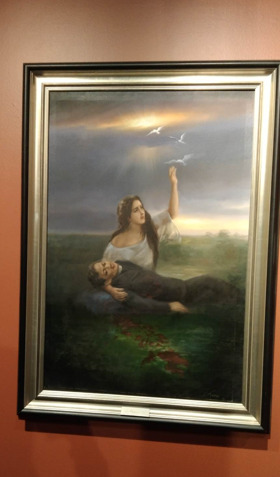
You might be wondering what kinds of collections are housed in the Jose Rizal Collection Room. Well, within it, we observed a variety of collections and artworks, most of which were created by Juan Luna, Carlos "Botong" Francisco, and Fernando C. Amorsolo. A lot of Jose Rizal collections, including his works, family tree, portraits of him, and even his best-selling books Noli me Tangere and El Filibustirismo, were also displayed to us. We also learned about his colorful past. The museum serves as an interchange, discussion, and educational space in addition to being a shrine dedicated to displaying art.
The artwork we saw in the suspended garden was made for the 20th exhibition of Pumapel: art in paper. The concept tension is produced by the idea of heavy rocks floating. The artwork has the appearance of a floating Japanese Zen garden.
3 notes
·
View notes
Link
앙헬 비욜도(Ángel Villoldo)는 1861년생이다. 내가 찾아본 바로 땅고 역사에서 이분보다 연장자인 사람은 아직까진 없었다. 그를 '땅고의 아버지'라는 별명으로 부르는 게 과하긴 ��지만 나이순으로 줄 세운다는 조건을 걸면 영 틀린 표현은 아니다. 그가 작곡한 '옥수수(=El Choclo)', '딱정벌레(=El Torito)', '항구의 꼬마(=El Porteñito)' 등등도 아직 반도네온이 본격 등장하기 전임을 고려했을 때 정황상 '크리올 민요(=Cantos Criollos)'란 장르로 불렸을 듯. 까를로스 가르델이 땅고 초기 최고 스타임에도 불구하고 오늘날 밀롱가에서 그의 음악이 거의 나오지 않는 이유는 대다수가 기타 반주에 맞춰 홀로 노래하는 녹음이라서일 텐데 아마도 앙헬 비욜도가 이 분야 선배라고 해도 무리는 아닐 것. 유튜브에 올라와 있는 상당수 녹음이 본인 자작곡을 직접 기타치며 노래하는 것들임. 특히 '항구의 꼬마'는 짧게나마 동영상까지 남아 있길래 링크.
2 notes
·
View notes
Text
Profiling Art Patrons of A Certain Class
Ayala Corporation, one of the oldest conglomerates in the Philippines founded in the year 1834 by Domingo Roxas and Antonio de Ayala and was first named Casa Roxas. Domingo Roxas has three children Jose Bonifacio, Mariano, and Margarita. Antonio de Ayala eventually ran off with Margarita while the second son, Mariano, had a great interest in arts. Mariano is one of the people that established the Academia de Dibujo y Pintura de Manila that saw students such as Juan Luna and Simon Flores.That interest in art remained with the Ayala bloodline. A few generations later, Fernando Zobel de Ayala y Montojo who is the son of Enrique Zobel de Ayala and member of the Ayala Family. In the year 1942, Fernando had a spinal deficiency that made him bedridden for that year. During that time, in order to pass time Fernando spent it sketching. He eventually moved to the United States to study in Harvard where he started making art work without any formal training in the arts.
Fernando eventually returned from the United States and started working in the Ateneo faculty where he created the Ateneo Art Gallery. It is widely recognized today as the first museum of Philippine modern art. The Ateneo Art Gallery was established in 1960 through Fernando Zóbel's bequest to the Ateneo of his collection of works by key Filipino post war artists. It also includes works by Fernando Amorsolo and Fabian de la Rosa. Enrique Zobel de Ayala had a great interest in arts and was friends with Fernando Amorsolo. Enrique’s interest in art is one of the reasons why his was also interested in it. Fernando Zobel eventually got close to Fernando Amorsolo due to his father’s connection. Besides being a successful businessman, Enrique Zobel was a philanthropist and patron of the arts. He was also a skilled essayist who contributed regularly to the newspapers of the day. For his work, he was awarded the Isabel la Catolica del Merito Civil. In his later years, Zobel established the Premio Zobel, a prestigious literary prize that honors Filipinos who have made contributions to Spanish culture. It is not farfetched to assume that the young Fernando would have been influenced by the artistic leanings of his father.
Aside from the Ateneo Art Gallery, Fernando Zobel de Ayala also founded Museo de Arte Abstracto Espanol which was created in Spain. The essay “176 Gifts / 176 Dispossessions” shows the struggles of the artist in the art industry and hardship to earn money. It shows how artists are forcefully making art out of their own will just to get money to buy food on the table. Then the art that they create will be bought by rich people and display them in their galleries. The problem here is that the poor try their hardest to feed themselves and their family just for the rich to exploit them and get the majority of the profit. Ayala is one of the families that display great art not to exhibit the talent and story but to earn money from it. That is the essence of a museum or art gallery wherein art is displayed for the clout not for the deep story given behind every stroke. This is the sad fate that artists need to deal with whenever they have their backs against the world. The sad part here is that they could not do anything at all.
1 note
·
View note
Text
4/3/13: Longoria Homer Lifts Rays, 3-1
Wednesday, April 3, 2013 Tropicana Field
Final score: Ray 3, Orioles 1 MVP: 3 Evan Longoria, Rays: 1-4, 2-run HR
Evan Longoria launch a tie-breaking 2-run home run in the 7th inning and Jeremy Hellickson blanked the Orioles for 7 innings after allowing a Nate McLouth lead off home run, carrying the Rays to a 3-1 victory. Longoria's shot, his lone hit of the night, came sandwiched in the middle of 3 consecutive hits in the 7th inning for the Rays, with the home run being the decisive hit that chased starter Wei-Yin Chen, who to that point had only allowed 5 hits and a single run. Fernando Rodney entered in the 9th after Hellickson walked Nick Markakis to lead off the inning, and induced a double play and a line out to end the game.
Of the 13 total hits allowed, 5 came from the lead off spot - 3 singles for Desmond Jennings, the game starting home run and a single for Nate McLouth, but both pitchers were able to work themselves out of trouble multiple times. The rubber game of the series will take place tomorrow afternoon, pitting Miguel González against Roberto Hernández as the Rays go for the season-opening sweep.
BAL 1/5/0 – LP: Wei-Yin Chen (0-1) TB 3/8/0 – WP: Jeremy Hellickson (1-0); S: Fernando Rodney (2)
Bal 1st: Nate McLouth takes Hellickson's first pitch and take it over the fence, for a lead off home run and an early lead before many of the fans have even gotten settled in. 1-0 BAL TB 4th: Desmond Jennings rips a lead off single, and Sean Rodríguez follows with a double; Ben Zobrist hits a sac fly to deep left, evening the score at 1; Wei-Yin Chen then gets a strikeout and a fly out to right to strand Rodríguez at 2nd. 1-1 TB 7th: Zobrist laces a lead off single, and Evan Longoria follows him with a monster 2-run shot to give the Rays the lead and chasing Chen; Luis Ayala enters and promptly gives up a double to Shelley Duncan, but gets a line out and 2 strikeouts to prevent any further damage. 3-1 TB
(Strat note: Another HBP here - Rodríguez in the 9th - making for the second HBP in this series.
WIth this game, we've reached the end of April 3, 2013. The next game will start April 4, but before that, I may need to figure out how exactly I want to handle the rosters for each team - and if I want to do a full-on replay [aka, using the real-life starting line-ups] or if I actually want to go ahead with a more 'managerial' type of oversight, allowing me to play with the acquired injuries and maybe making some alterations as necessary. Leaning towards that, especially since I don't have cards for everyone, but I've also got to find a way to maintain things to some sense of reality.)
Tampa Bay 2-0; Baltimore 0-2 Next game in replay: DET (Porcello, 0-0) @ MIN (Pelfrey, 0-0)
0 notes
Audio
Ficha Tecnica:Canción: Myriam Adela - Viaje MacabroAlbum: Viernes 13 SIngle 2023Artista: VIERNES 13 Musica: Crispin Rodriguez - Marcelo Riveros Arreglos: Fernando Ayala - Beto Fernandez Letra: Hugo González Grabado y Mezclado: Estudio Wolf Van House- MRA. - Mariano Roque Alonso - ParaguayTécnico de Mezcla y Edición: Victor Gomez Productor Musical: Crispin Alberto Rodriguez Sello Discográfico: The Iron Riff Productor Ejecutivo: Susana Alvarado por The The Iron Riff ProduccionesFecha de lanzamiento: 10 Febrero 2023Producido, Lanzado y Distribuido en Paraguay por: The Iron Riff Producciones-----------------------Reservados Todos los Derechos-----------------------
0 notes
Text
Casa Ayala y su entorno*
DetallesCategoría: La voz silenciada Publicado: 04 Diciembre 2006��Visto: 9079
Los pagos de Casa Ayala, Costa Ayala, El Rincón y Tinoca formaron en un principio un gran lote de tierras que se repartirían entre los conquistadores de más renombre, debido a su gran importancia económica, fundamentalmente al negocio de la caña de azúcar, intimamente ligado a la riqueza en aguas de la zona, siendo hacia el año 1485 Juan de Civerio y Muxica uno de los principales agraciados, junto a Antonio de Arévalo, Hernando de Miranda, García de Asiego, Hernando de Prado, Ibone de Armas, Juan de Mayorga, Pablo Pérez, Alonso Hernández Castil de Vil y Gonzalo de Burgos; años más tarde, concretamente en 1506 con el Licenciado Zarate, se revisan las datas anteriores siendo la principal beneficiada Catalina Guerra, esposa de Juan de Civerio[1] (en muchos documentos aparece como Siverio o Siberio).
Por los mismos años de fines del siglo XV y comienzos del XVI llegará a la zona Guillén de Ayala, apellido de origen vasco[2], al igual que el de muchos otros conquistadores. No consta que este personaje estuviera relacionado con la conquista de la Isla, pero sí que llegó por aquellos primeros momentos y se hizo con un considerable lote de tierras en la desembocadura del Barranco de Tenoya. Allí construyó su hacienda, justo en la ladera del Barranco, en lo que hoy en día se sigue conociendo como Casa Ayala y en su momento se conoció como la casa de Guillén de Ayala, y plantó los terrenos colindantes, llegando sus posesiones al Llano del Mar, lo que hoy es conocido como Costa Ayala.
En el testamento del Capitán D. Juan Siberio Mujica, hecho el día 8 de noviembre de 1629, nos decía que había comprado, durante su matrimonio con Dª. Catalina Espino, un tributo de 650 ducados en los bienes que habían sido de Guillén de Ayala, en Tenoya, con sus tierras y aguas, y que continuaban pagándose.[3]
En el año 1675 Salvador Hernández y su esposa Catalina Hernández de Cerpa, vecinos de San Pedro de Tenoya, compraron un lote de tierras, compuesto por unas veinte fanegadas a D. Juan Huesterling Sarmiento y Saavedra, que a su vez había sido comprado a los herederos de D. Bartolomé de Moxica en el año 1672. Eran tierras montuosas en El Cardonal que lindaban por la parte de arriba con la Cueva del Lagarto, continuando adelante por la Cordillera del Cardonal a dar a los Caideros del Rincón junto a las tierras que llamaban de Burgos (hace mención a Gonzalo de Burgos, uno de los conquistadores ya mencionados), y que en aquel entonces pertenecían a Francisco González Enamorado, y por la parte de abajo estaba el mar y los cercados que habían sido de Guillén de Ayala, y por aquellas fechas ya pertenecían al matrimonio comprador. El personaje mencionado, Francisco González Enamorado, será el que le de nombre a lo que hoy es una de las zonas más importantes de Siete Palmas.
El mencionado comprador, Salvador Hernández, era labrador y Alcalde del Lugar de Firgas, e imponía su deuda sobre 12 fanegadas de tierra labradía de “pan sembrar”, que eran conocidas como Los Cercados de Ayala, con una fanegada plantada de viña, higueras y otros árboles frutales, casa de alto y bajo y dos días y dos noches de agua que le correspondían del Heredamiento de Tenoya. Sus linderos eran por un lado lo que llamaban el Llano de la Mar, tierras que pertenecían a los herederos de D. Gerónimo de Angulo, por el otro lado el Barranco de Tenoya, por la parte de abajo daba con el mar y por arriba otras tierras que el comprador había adquirido a D. Fernando Lezcano en el año 1648.[4]
En el año 1682 Salvador Hernández tenía todavía unas 24 fanegadas de tierra, “doce debajo de agua y doce de sequero montuosas y labradías, que estaban situadas “donde llaman El Rincón”. Lindaban con tierras de sus yernos Pedro Felipe y Juan Rivero, con las de su hijo Sebastián Hernández de Cerpa y con el Barranquillo de la Hoya de Mota[5]; evidentemente había hecho con las tierras de toda la zona, pero gran parte de las posesiones de Salvador Hernández las había repartido en las dotes de casamiento de sus hijos.
En el siglo XVIII aumenta el número de familias asentadas en este pago y así, en el año 1745 Josefa Falcón, viuda de Francisco Herrera, vende un pedazo de tierra en “Casa de Aiala” debido a las necesidades que estaban pasando sus hijos, que lindaban con tierras de los herederos de Mateo Cabrera y con otras de Antonio González, así como con el Barranco y al otro lado la Acequia del Rincón.[6] Años después, concretamente en 1780, el matrimonio formado por D. Fernando Lezcano Y Dª. Tomasa González vendieron al Capitán D. Francisco Díaz de Armas, uno de los personajes más importantes de Tenoya en aquella centuria, unas tierras labradías bajo riego ”donde dicen la Casa de Aiala” que daban unas ocho fanegadas de grano anuales[7], lindando por arriba con la acequia que iba al Rincón, por un lado tierras de Salvador Afonso y por otros dos lados tierras que pertenecían al comprador.
Por las mismas fechas el mismo personaje también compraba a Salvador Afonso, un lote de tierras con el que lindaban las tierras anteriormente citadas, cuatro trozos de tierra “donde llaman El Cortijo de Aiala” en Los Lomitos, que había heredado de Catalina Rivero[8]; otras que compró a los herederos de Catalina González en la misma Casa de Aiala, que lindaban por arriba con la acequia que iba al Rincón, y a Diego Rodríguez le compra tierra plantada de parrales en Los Risquetes, que lindaba por arriba con las propiedades del comprador, por abajo el Barranco Real y por un lado las tierras que llamaban La Capellanía.[9]
http://www.municipiodesanlorenzo.com/images/stories/barrios/casaayala/image002.jpg
En esta lámina se puede apreciar el estado actual de la casa señorial que perteneció a D. Andrés Arbelos. Este tipo de legados merecen más atención por parte de los Organismos, y su restauración sería un gran acierto. Lámina del autor. Si en el siglo XVII fue Salvador Hernández, natural de Firgas, el gran poseedor de tierras y posesiones en la zona, en el siglo XVIII lo sería el Capitán D. Francisco Díaz de Armas, natural de La Vega[10], cosa curiosa que tuvieran que ser, en ambos casos personajes foráneos, pero ambos asentados en Tenoya después de sus respectivos matrimonios.
Ya desde mucho antes del año 1796 la familia Rivero tenía pequeñas posesiones de tierra de regadío en la Cañada Honda, lindando por arriba la Acequia del Rincón y por abajo las tierras de D. Miguel Camacho, mientras que a ambos lados las limitaba el Barranquillo[11], y así diferentes familias se fueron haciendo con pequeñas posesiones desde finales del siglo XVIII, construyendo sus hogares y aprovechando las ricas tierras del entorno.
En el año 1843 el Hospital de San Martín tenía unos terrenos que denominaban la finca de La Calzada, que lindaban con las tierras de D. Pedro Díaz Acosta, lo que hizo que éste último las quisiera comprar. Se trataba de una ladera que estaba por la parte de arriba del camino que iba a la casa que había sido del maestrescuela (dignidad de algunas iglesias catedrales a cuyo cargo estaba la responsabilidad de enseñar las ciencias eclesiásticas) D. Andrés Arbelos, incluido el rincón de la cordillera y que se denominaba genéricamente La Ladera y Rincón, la que podemos apreciar en la lámina que podemos ver en este trabajo.
El Ayuntamiento de San Lorenzo vio con buenos ojos aquella pretensión, debido a que las lluvias arrastraban la tierra y era muy necesario construir una pared para la citada Hacienda, obra que había sido solicitada en varias ocasiones por dicho Ayuntamiento, pero que no se había podido llevar a cabo debido a la escasez de recursos de la Institución responsable.[12]
Por aquellos años también eran propietarios en la zona de Costa Ayala, entre otros muchos: D. Pedro Montesdeoca, D. Pedro de Armas, D. Antonio Henríquez Granado, D. José Sánchez Rivero, Dª. Antonia Vega Falcón, D. Manuel Vega Falcón, los herederos de D. Fernando Ramos, los herederos de D. Gregorio Déniz y D. Fernando Cabrera Suárez (dueño de la Barranquerilla en Casa de Ayala, que hacía frente con el camino público de La Herradura).[13]
Hasta el año 1860 todos los pagos de la zona de Costa Ayala y sus alrededores entraban dentro de los datos de población de Tenoya, sin especificar el pago a que pertenecían, y así cuando se habla de la población de Tenoya hay que tener en cuenta esta circunstancia, ya que entraban los vecinos de los pagos de los alrededores.
En la obra de Pedro de Olive del año 1865 ya se nos dan datos de:
- Casa de Ayala, que era un caserío donde había doce edificios de un piso y dos chozas, habitadas por 15 vecinos, ascendiendo su población a 62 habitantes. - El Llano del Mar(conocida hoy como Costa Ayala) era una casa de labranza de un piso, habitada tan sólo por dos personas. - El Rincón era otra casa de labranza de un solo piso, igualmente poblada por dos habitantes. Ya a comienzos del siglo XX, concretamente en el año 1905, los datos de población de Casa Ayala se habían multiplicado, apareciendo una población de más del doble con respecto a la cifra anterior, en concreto ascendía a 154 habitantes.[14] En el Nomenclator del año 1930 los datos se hacen más precisos y se concreta aún mucho más en los pequeños pagos de los alrededores y así aparecen: - La Cañada de los Lagartos(también conocida desde el siglo XVII como la Cueva del Lagarto[15]) con una población de 23 habitantes repartidos en cuatro viviendas. - Cañada Honda, al igual que el anterior era un caserío con 51 habitantes repartidos en seis viviendas. - Casa Ayala era ya un barrio de 52 viviendas con una población de 277 habitantes. - Cortijo de Casa Ayala era un caserío con cinco viviendas y una población de 27 habitantes. - Costa de Casa Ayala era otro caserío con 49 habitantes repartidos en siete edificios. - Risco-quio tenía seis viviendas con una población de 43 habitantes. - El Rincón tenía una población de tan solo catorce habitantes, repartidos en cuatro viviendas.
Curiosamente el nombre de Guillén de Ayala, aquel personaje del siglo XVI, llegará hasta nosotros, dándonos la posibilidad de trabajar sobre él y sacar a la luz su relación con esta zona de la Isla.
Juan Francisco Santana Domínguez Doctor en Historia
1 note
·
View note
Link
0 notes
Text
youtube
Fin del Mundo - Full Performance (Live on KEXP) http://KEXP.ORG and the Ministry of Culture of Argentina present KEXP live from Argentina with Fin del Mundo performing live at the Kirchner Cultural Center in Buenos Aires, Argentina. Recorded September 22, 2022. Songs: La noche El próximo verano Cuando todo termine El fin del mundo El incendio Julieta Heredia - Guitar Julieta Limia - Drums Lucía Masnatta - Guitar / Vocals Yanina Silva - Bass Live Sound Engineer: Pablo Leal Sound Mix: Nicolás Aimo Assistants: Mariano Esain, Matías Figueredo, Martín Rulli, Jorge Ignacio Correa, Mauricio Godoy, Sebastián Ayala, Diego Fraga, Fernando Figueroa ----------------- KEXP live from Argentina is a partnership with the Argentine Ministry of Culture, MICA, and the Kirchner Cultural Center. Realization, technical production: Centro Cultural Kirchner and KEXP Host: Cheryl Waters Interpretar: Eugenia Segovia Sound Engineer: Pablo Nelken Audio Mastering: Matt Ogaz Videographers: Jim Beckmann, Sebastián Cáceres, Carlos Cruz & Alaia D’Alessandro Live Director: Diego Laber Editor: Scott Holpainen Art: Lucila Rojo & team (stage design and art) Lighting: Omar Posematto Production Assistant: Gonzalo Vazquez Media Fixer: Melissa Restrepo Production and communication at Dirección Nacional de Integración Federal y Cooperación Internacional (Ministerio de Cultura de Argentina): Viviana Luna, Paloma Moccia, Pablo Murillo, Marcos Ribas, Lucia Soberal, Luciana Malavolta, Mariana Leder Kremer Hernández Ministerio de Cultura de Argentina: Tristán Bauer - Ministro de Cultura de la Nación Argentina Lucrecia Cardoso - Secretaria de Desarrollo Cultural Ariela Peretti - Directora Nacional de Integración Federal y Cooperación Internacional https://ift.tt/ikKqVeB https://ift.tt/qo0GnpW https://ift.tt/hvX93xH https://www.cck.gob.ar http://kexp.org via YouTube https://www.youtube.com/watch?v=EpXIt_7uso8
1 note
·
View note
Text
Cris Miró
New Post has been published on https://flashvintage.co.uk/2024/05/22/cris-miro/
Cris Miró

Cris Miró (16 September 1965 – 1 June 1999) was an Argentine entertainer and media personality with a brief but influential career as a top-billing vedette in Buenos Aires’ Revista theatre scene during the mid-to-late 1990s. Miró began her acting career in the early 1990s in fringe theatre plays and later rose to fame as a vedette at the Teatro Maipo in 1995. For years, she hid her HIV-positive status from the press until her death on 1 June 1999 due to AIDS-related lymphoma.
As Jorge Perez Evelyn in the ’70s, Cris was also a travesty celebrity in Argentina. She caused a media sensation and paved the way for the visibility of the transgender community in local society. Nevertheless, her figure was initially questioned by some members of the burgeoning Travesti activism movement, who resented the unequal treatment she received compared to most trans people. She is now regarded as a symbol of the Argentine 1990s.
In the late 1980s, Miró met theatre director Jorgelina Belardo at Bunker—a popular gay club in Buenos Aires—who asked her to join a theatrical production group that Belardo had formed with Juanito Belmonte. Belardo became Miró’s close friend and artistic director, while Belmonte worked as her press agent. Working with them, Miró made her fringe theatre debut in the plays Fragmentos del infierno—based on a text by Antonin Artaud—and Orgasmo apocalíptico, which focused on sexuality issues more explicitly. Before her career as a vedette, Miró made film appearances in Fernando Ayala’s Dios los cría (1991) and Luis Puenzo’s La peste (1992), based on Albert Camus’ novel of the same name.
In 1994, Miró went to a casting call at Teatro Maipo, one of the most important venues in the Buenos Aires revue theatre scene (in Spanish teatro de revistas), a widely popular genre at the time. She only presented herself as a female once on stage, performing a strip tease to a Madonna song. Producer Lino Patalano immediately cast her as a vedette for his show Viva la Revista en el Maipo, which premiered in 1995 and quickly made her a celebrity. Miró appeared on Mirtha Legrand’s famous television program, where guests have lunch with her and are interviewed. That broadcast is now infamous for the uncomfortable questions that Legrand asked Miró, such as her dead name or if “it bothers you that people know that you are a man”. At that time, questions like these were common to transgender guests on television but are negatively assessed in retrospect.
Legacy:
After gaining popularity as a vedette, Miró became a national media sensation for the perceived gender-bender aspects of her image and is considered a symbol of the postmodern era in Argentina. As the first Argentine travesty to become a national celebrity, she has been considered the “first trans icon of the country”. Miró’s presence meant a change in the Argentine show business of the era and popularized transgender and cross-dressing acts in Buenos Aires’ revue theatrical scene. As such, she is regarded as a symbol of the social milieu of the Argentine 1990s and an icon of the decade. She paved the way for other Argentine travestis and trans women to gain popularity as vedettes, most notably Flor de la V, who described her in 2021 as the “first trans [person] that the public recognized as an artist” and a “shooting star that lasted only a short time on earth [but] will continue to illuminate the way forever.” In an interview with Revista NX in 1997, Miró reflected on her impact:
I am very grateful for what is happening to me, and this has helped open doors for other people. (…) But I do not forget many people who were there and tried, who worked a lot and continue to do so. This regarding the commercial circuit. But it was also important because of all the prejudice that existed around travestis, who were related to [street prostitution], or with the transformistas (…). I think that in a few years these beliefs changed a lot. I do not claim all this myself, but I do know I did my bit because the doors were opened to me, and I always said that those open doors were also going to open for other people and that was the most important thing. [The arrests and torture of travestis] give me feelings of horror. I feel sorry for these things that happen in the country, although this reality occurs in other places. (…) … I have also experienced those abuses. Going down the street and having problems with the police, with other people; being at the doorstep of an apartment waiting for a taxi to come and being afraid that a patrol car will come and take me away. Some years ago I thought I was never going to live this Argentina of achieving rights or respect. For example, that a transsexual is given her documents in accordance with her sexual identity. But everything has a cost. There have been many travestis who are no longer with us, who are imprisoned, who are taken into custody daily, all so that today other people can walk more freely on the street.
Miró’s rise to fame in the mid-1990s was a watershed moment in the visibility of transgender identities in Argentine society, as it increased the visibility of the transgender community in the national media scene and opened a debate about their marginalized living conditions.But, although the rise to the celebrity of Miró happened in parallel to the political organization of travesties and the visibility of their activism, she never took part in the movement; she was initially criticized by many of its members, who resented the unequal treatment she received compared to the neglected travesty prostitutes.[3] They also criticized Miró for embodying the “patriarchal mandate” that trans women should look like an idealized vision of “the perfect woman”. In this sense, she evidenced the desire of thousands of men for the new travesti bodies, with anthropologist Josefina Fernández claiming that: “the exchange that Cris Miró makes while living from her job as a vedette, as a body inserted in a market, does not differ from the exchange that a [travesti street prostitute] is forced to make to survive.” Reflecting on her death, feminist scholar Mabel Bellucci argued in 1999 that Miró’s acceptance was an attempt by “the system” to try to show that there was not so much discrimination, presenting her as “the exception to the rule” and encapsulating her in a role that prevented her from creating ties with her [travesti] peers. She wrote: “If this had meant a greater democratization of the travesti movement she could have achieved a greater recognition of rights.” Biographer Carlos Sanzol reflected in 2016:
Cris was somehow both a “beneficiary” and victim of machismo. A beneficiary because she represented the model of “womanhood” that the imaginary of misogyny seeks: the femme fatale, the objectified woman. And a victim because the macho discourse excludes everything that is far from the canon of virility. Seventeen years after her death, these values still persist in Argentine society with their worst facet: femicides.
A portrait photograph of Miró is displayed since 2019 at the Museo Casa Rosada as part of the exhibition Íconos Argentinos (English: “Argentine Icons”).
Her death is featured in the plot of Camila Sosa Villada’s 2019 award-winning novel Las Malas. The novel’s trans main characters mourn her, regarding her as “the Evita of travesties.”
In June 2021, an Argentine producer announced that a biographical television series on Miró was in the making, potentially released via Netflix the following year.
0 notes
Text

Gilda Lousek
Los tallos amargos; Fernando Ayala, 1956
1 note
·
View note